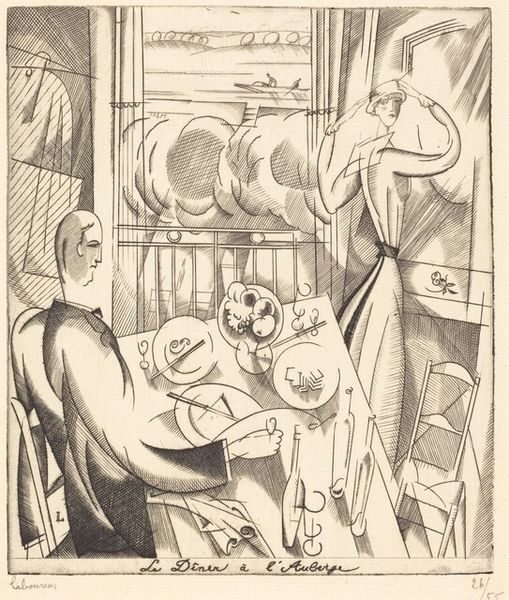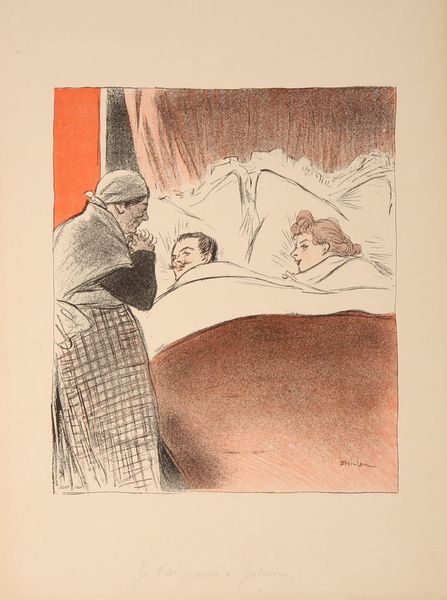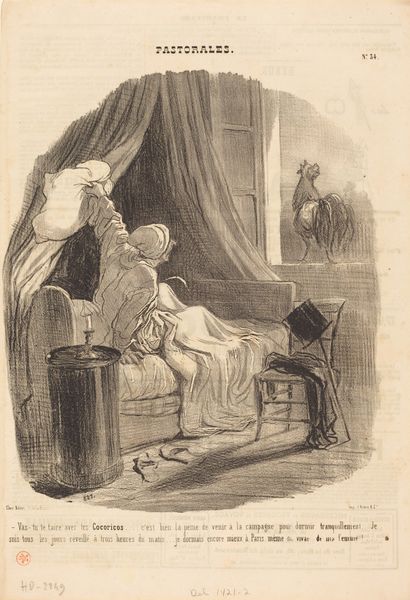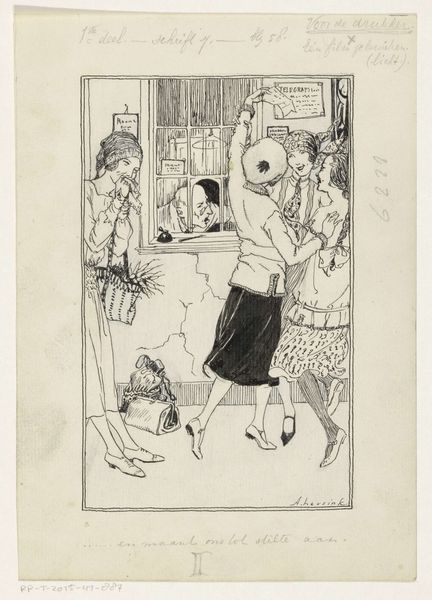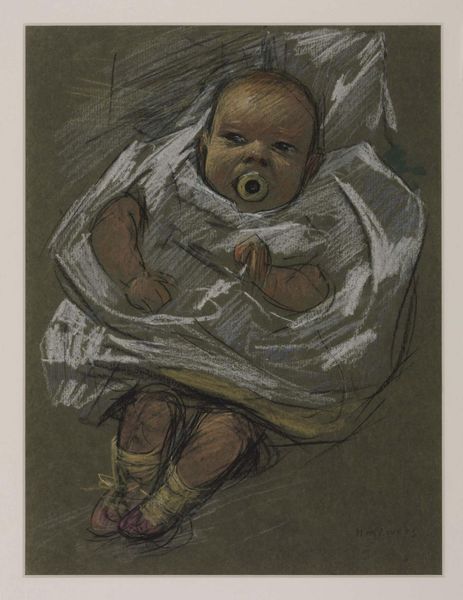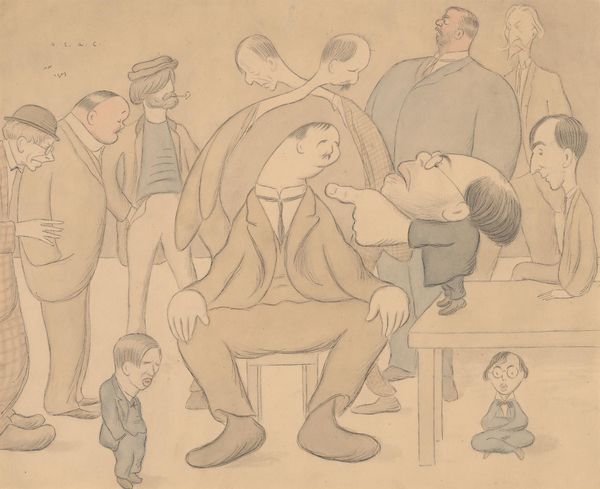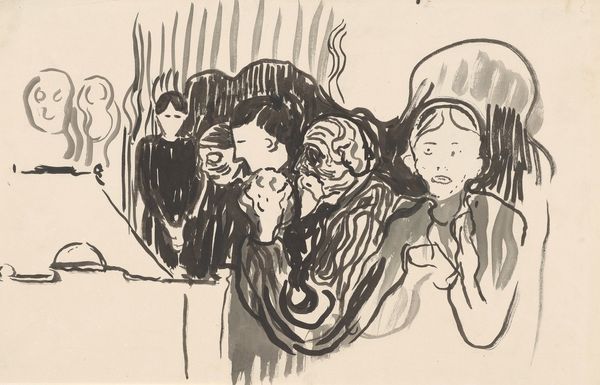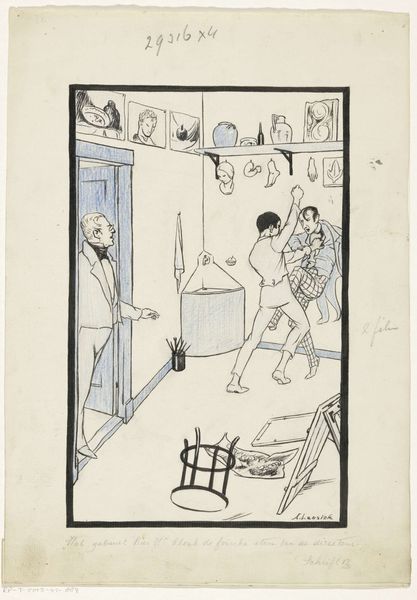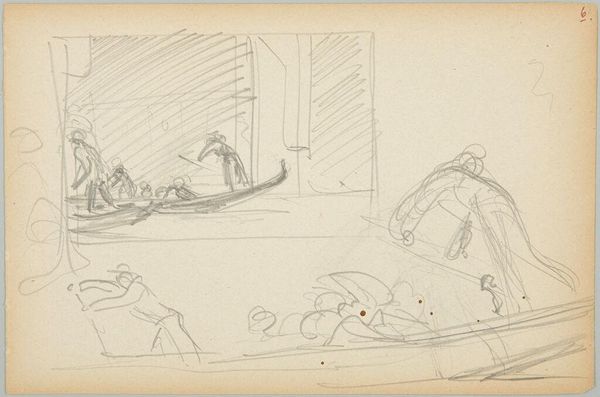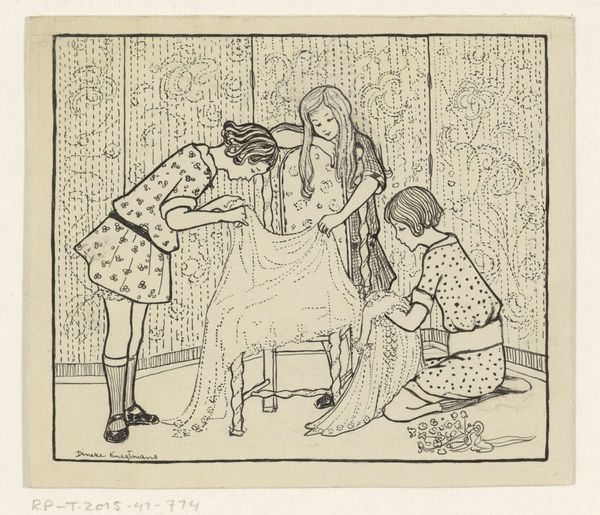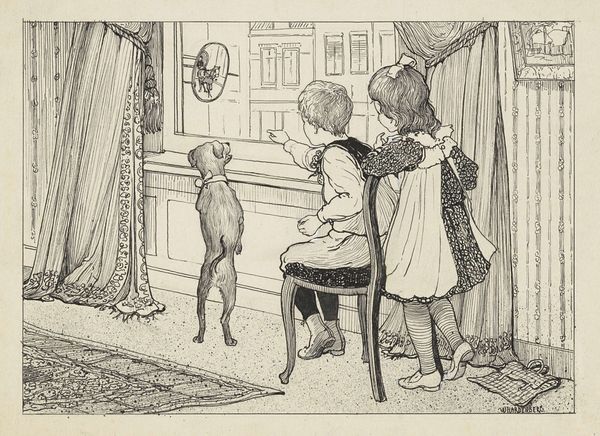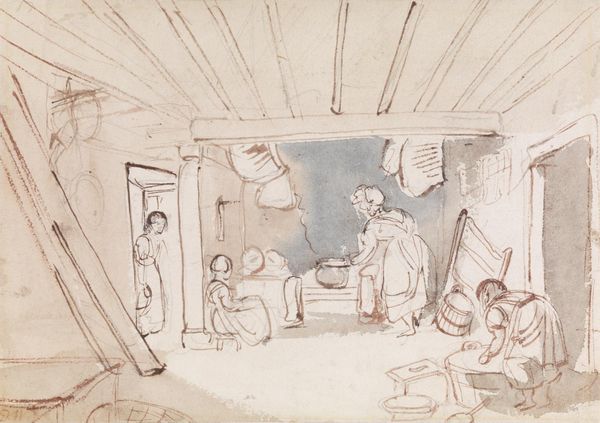
mixed-media, print
mixed-media
narrative-art
figuration
social-realism
realism
Dimensions: image: 260 x 464 mm sheet: 406 x 578 mm
Copyright: National Gallery of Art: CC0 1.0
Curator: This is "Rural Home Front," a mixed-media print by Robert Gwathmey from 1943. Editor: Whew, it's a powerful image. Right away, I get a sense of fragmented narrative—of lives pulled in a hundred different directions. It feels like trying to capture the entirety of a family's struggles and joys in a single, breathless moment. Curator: Absolutely. Gwathmey’s interest was in conveying the social realities of rural America during the war years. Note how he positions the viewer to observe various activities related to war mobilization within a domestic setting. We can observe various activities such as maintaining the home with childcare or men ready for war with one on the homefront. He is asking a big question here: Who pays the true price in times of war? Editor: I find it a tender, yet tense piece. The colors, though muted, have a vibrancy—a desperate kind of energy. I also notice how the figures all seem so isolated. Look at the woman struggling to keep up with household needs to keep warm next to the children at her feet. Curator: Exactly, and this is rooted in the printmaking process. The deliberate, flat color planes typical of prints emphasize social categories through symbolic means. Gwathmey was committed to exploring class distinctions and the representation of labor, drawing from personal experience to give visual form to critical insights regarding racial and economic inequities during that particular historical time. The choice of material further makes the art available to more people due to it being prints and easier to produce and sale. Editor: The scene feels incredibly intimate, yet also somehow detached—like we're viewing a stage set rather than stepping into someone's life. Does that feeling resonate within you also, even with its social realities being at the forefront? Curator: That’s insightful. The artist’s choices of figuration coupled with realism and use of the narrative invites our active participation in uncovering the history represented while simultaneously urging the observer to be aware that one can only enter the world as an observer. This effect helps the message be heard. Editor: Ultimately, it’s a powerful reminder that war isn't just fought on battlefields. It’s fought in homes, in hearts, and in the daily sacrifices of ordinary people. Curator: A brilliant final note. Gwathmey asks us to consider what cost is being paid at home as resources were allocated towards global war efforts.
Comments
No comments
Be the first to comment and join the conversation on the ultimate creative platform.
